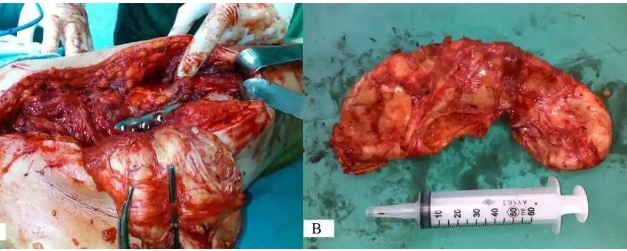A 56-year-old man from Turkey, previously treated for a femoral fracture in 1998, presented with a complaint of swelling around his fracture site. The swelling appeared two years before his current visit at the location of his metal plate implant for the fracture. However, it began to increase during the recent six months. The associated pain and other symptoms required him to seek immediate medical evaluation.
Examination and Investigations
The examination revealed a mass on the anterolateral aspect of the patient’s right thigh. His CRP level was 3.7mg/dl and his eosinophil concentration was 12.4 percent. Doctors took a biopsy of the mass on suspicion of an infection at the implant site. They suspected bursitis at the greater trochanter to be the possible cause of pain and swelling. Therefore, they cultured another specimen from the mass to find out about the causative organism. The culture came positive for Staphylococcus epidermidis. Furthermore, an elevated ESR and white blood cell count of the patient confirmed the diagnosis of trochanteric bursitis.
The doctors carefully excised the mass on the patient’s thigh. Moreover, they also removed the metal plate and screws. The excised mass had a small cystic structure inside it and the differential diagnosis was that of a hydatid cyst. However, no parasites were seen on the microscopic examination.
Post-excision histopathological examination of the mass confirmed it was a soft tissue reaction against the implant. Twelve months after the removal of the mass, the patient recovered completely. Moreover, his follow-up CT scan showed no secondary focus of reaction.
Are Reactions Against Implants Common?
Soft tissue reactions against orthopaedic implants are fairly common. In fact, they are the most common causes of pain and swelling seen after such implant surgeries. However, doctors should also consider malignancies and hydatid cysts as possible complications. No matter what the case, it warrants extensive pre-operative radiological and biopsy examinations.




